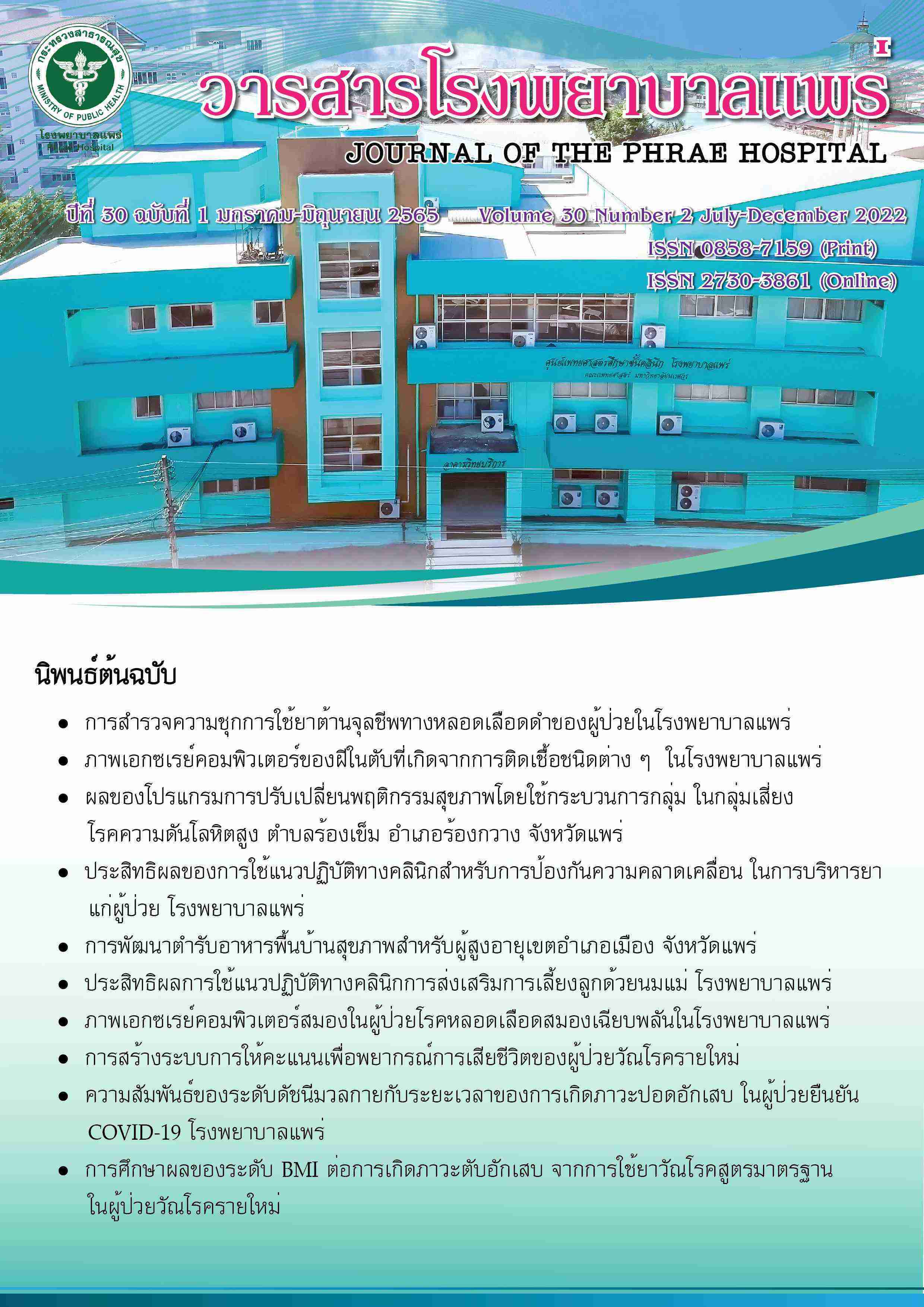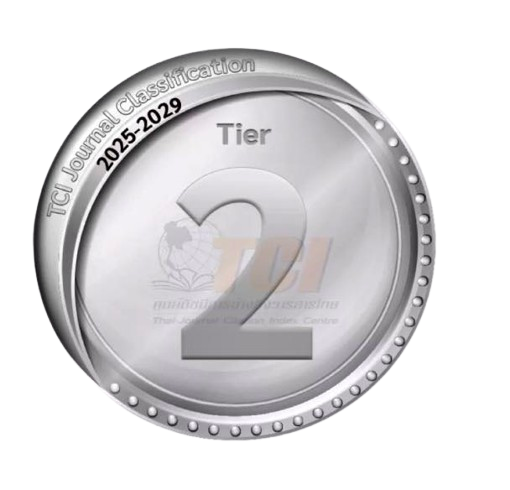Association of BMI levels and drug-induced hepatitis in new tuberculosis patient
Keywords:
Drug induced hepatitis, TB, BMIAbstract
Background: The one cause of death in TB patients is anti-TB drug induce hepatitis and being low BMI is the risk factor of anti-TB drug induce hepatitis. Data from Phrae Hospital showed that TB patients with a low BMI had a high proportion of deaths. The previous studies have found an association between low BMI and anti-TB drug induce hepatitis. But the result remains unclear and adjusting confounder is also did not perform.
Objective: To assess the association between BMI levels and anti-TB drug induce hepatitis in newly diagnosed TB patients.
Study design: The retrospective case control with concurrence case sampling design was perform between 1 January 2019–31 December 2021, The case were the newly diagnosed TB patients with anti-TB drug induce hepatitis, and the control were the newly diagnosed TB patients without hepatitis in 1 to 4 ratios. Covariates of gender, age, BMI, history of alcohol drinking, history of liver disease, DMs, HIVs were considered. Multivariable logistic regression was used for analyzing, showing odds ratio with 95% CI.
Results: The odds of being anti-TB drug induced hepatitis is 1.56 times from low BMI patient compared to normal BMI patient after adjusting covariates of age, gender, history of alcohol intake, history of liver disease and DMs.
Conclusion: We cannot conclude that BMI levels associate with anti-TB drug induced hepatitis in new TB patient. However, low BMI patient tend to have drug induced hepatitis more than others. Close monitoring of liver function and correction of malnutrition patient is crucial.
Keywords: Drug induced hepatitis, TB, BMI
References
กระทรวงสาธารณสุข. แนวทางการดําเนินงานขับเคลื่อนงานวัณโรคภายใต้ กรอบคารับรองการปฏิบัติราชการกระทรวงสาธารณสุข (Performance Agreement : PA) และแนวทางการ ตรวจราชการกระทรวงสาธารณสุข ประจาปีงบประมาณ พ.ศ. 2562. นนทบุรี: สำนักวัณโรค กรมควบคุมโรค กระทรวงสาธารณสุข; 2562.
Alavi-Naini R, Moghtaderi A, Metanat M, Mohammadi M, Zabetian M. Factors associated with mortality in tuberculosis patients. J Res Med Sci 2013;18(1):52–5.
Devarbhavi H, Singh R, Patil M, Sheth K, Adarsh CK, Balaraju G. Outcome and determinants of mortality in 269 patients with combination anti-tuberculosis drug-induced liver injury: Anti-TB drug-induced liver injury. J Gastroenterol Hepatol 2013;28(1):161–7.
กรมควบคุมโรค สำนักวัณโรค. แนวทางการควบคุมวัณโรคประเทศไทย พ.ศ. 2561. นนทบุรี: สำนักวัณโรค กรมควบคุมโรค กระทรวงสารณสุข; 2561.
Ramappa V, Aithal GP. Hepatotoxicity Related to Anti-tuberculosis Drugs: Mechanisms and Management. J Clin Exp Hepatol 2013; 3(1):37–49.
Beck-Friis J, Studahl M, Yilmaz A, Andersson R, Lönnermark E. Increased risk of hepatotoxicity and temporary drug withdrawal during treatment of active tuberculosis in pregnant women. International Journal of Infectious Diseases 2020;98:138–43.
Soedarsono S, Riadi ARW. Tuberculosis Drug-Induced Liver Injury. JR 2020; 6(2):49.
Mohamed J, H. NNA, H. ZA, B. BS. Mechanisms of Diabetes-Induced Liver Damage: The role of oxidative stress and inflammation. SQUMJ 2016;16(2):e132-141.
Soedarsono S, Mandayani S, Prayuni K, Yuliwulandari R. the Risk Factors for Drug Induced Hepatitis in Pulmonary Tuberculosis Patients in Dr. Soetomo Hospital. Indones J Trop Infect Dis 2018;7(3). doi.org/10. 20473/ijtid.v7i3.8689
Sun Q, Zhang Q, Gu J, Sun W wen, Wang P, Bai C, et al. Prevalence, risk factors, management, and treatment outcomes of first-line antituberculous drug-induced liver injury: a prospective cohort study: Anti-TB Drug-Induced Liver Injury. Pharmacoepidemiol Drug Saf 2016;25(8):908–17.
Chen R, Wang J, Zhang Y, Tang S. Key factors of susceptibility to anti tuberculosis drug induced hepatotoxicity. Arch Toxicol 2015;89(6):883–97. doi.org/ 10.1007/s00204-015-1473-1
Gaude GS, Chaudhury A, Hattiholi J. Drug induced hepatitis and the risk factors for liver injury in pulmonary tuberculosis patients 2015;4(2):238–43.
Abera W, Cheneke W, Abebe G. Incidence of antituberculosis-drug-induced hepatotoxicity and associated risk factors among tuberculosis patients in Dawro Zone, South Ethiopia: A cohort study. Int J Mycobacteriology 2016;5(1):14–20. doi.org/10.1016/j. ijmyco. 2015.10.002
Abbara A, Chitty S, Roe JK, Ghani R, Collin SM, Ritchie A, et al. Drug-induced liver injury from anti- tuberculous treatment: A retros- pecttive study from a large TB centre in the UK. BMC Infect Dis 2017;17(1):1–9.




